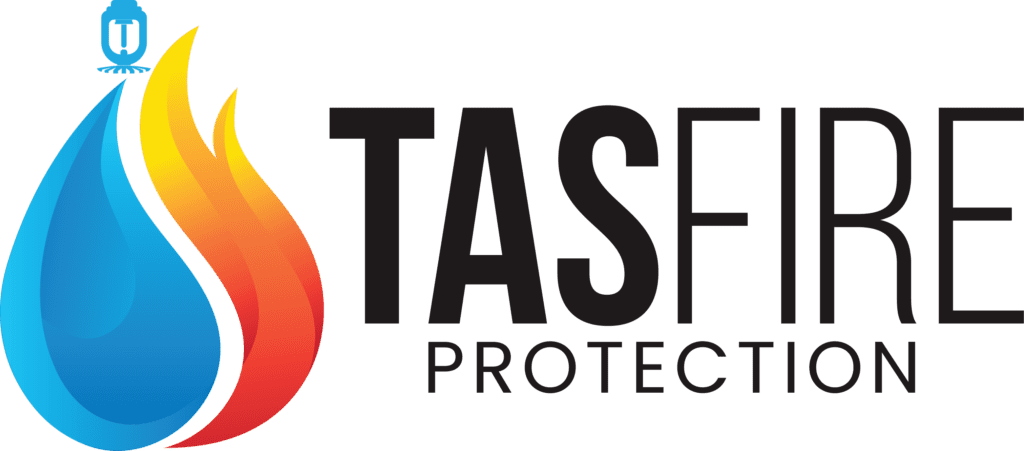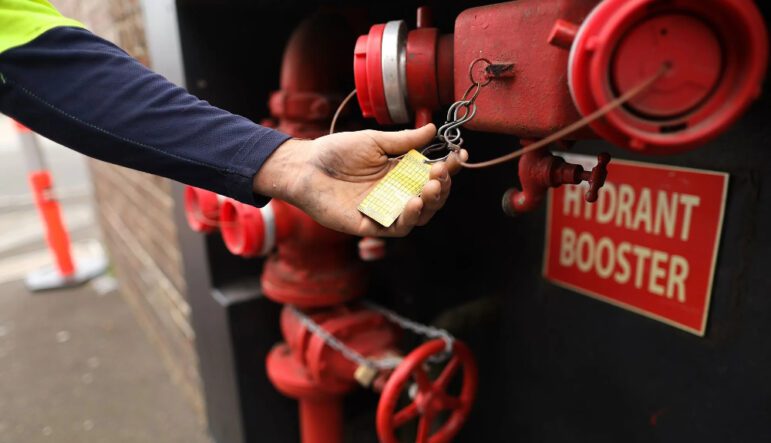Fire Hydrant Systems: A Comprehensive Guide to Types, Functions, and Safety Standards…

Fire hydrants are critical components of urban fire safety infrastructure, providing firefighters with immediate access to pressurized water supplies during emergencies. Understanding how fire hydrant systems work, their various types, and maintenance requirements is essential for ensuring optimal fire protection in commercial and residential properties.
What Are Fire Hydrants?
A fire hydrant is a connection point by which firefighters can tap into a water supply. It serves as a readily available valved connection that provides firefighters with immediate access to a pressurized water source during fire emergencies. Fire hydrants don’t store water themselves; instead, they function as access points to municipal water systems, allowing firefighters to quickly connect hoses and direct high-pressure water streams onto fires.
Fire hydrant provides immediate high-pressure water when every second counts in fire suppression efforts.
What Does a Fire Hydrant System Consist Of?
A fire hydrant system consists of a network of pipes, valves, and strategically placed hydrants that connect to a water source, typically the municipal water supply or a private reservoir. This infrastructure includes several interconnected components working together to ensure reliable water delivery during emergencies.
Core System Components:
- Water Supply Source: Municipal water mains, dedicated storage tanks, private reservoirs, or backup water sources for critical facilities.
- Distribution Network: Underground pipe systems that transport water from the source to individual hydrants throughout the coverage area.
- Hydrant Units: The visible components firefighters interact with, containing:
-
- Bonnet: Protects the top mechanism from contamination
- Barrel: Main body housing internal components
- Main Valve: Controls water flow when not in use
- Stem: Operates the valve mechanism
- Nozzle/Outlets: Connection points for firefighting hoses
- Control Infrastructure: Shut-off valves and pressure regulation systems for maintenance without compromising the entire network.
- Pumping Systems: Maintain adequate pressure, especially in elevated locations or areas distant from main supplies.
How the Fire Hydrant System Works
Fire hydrant systems provide firefighters with immediate access to a pressurized water source through a coordinated process:
- Connection: Firefighters remove protective caps and connect hoses to hydrant outlets.
- Valve Operation: Using specialized wrenches, firefighters open the main valve, allowing pressurized water to flow from the supply.
- Pressure Management: Fire hydrant provides immediate high-pressure water typically ranging from 50-150 PSI, controlled through valve operation and nozzle settings.
- Sustained Operations: The system maintains consistent water supply throughout extended firefighting operations.
Types of Fire Hydrants – Extended Classifications
Dry Barrel Hydrants
Designed for freezing climates, these hydrants keep water below ground to prevent ice blockages. The main valve operates below the frost line, and water rises when activated. After use, the system automatically drains to prevent freezing.
Wet Barrel Hydrants
Ideal for temperate climates, these hydrants maintain water in the barrel continuously. Each outlet has its own valve, enabling multiple hoses to operate simultaneously with immediate water availability.
Wall Hydrants
Space-efficient solutions mounted directly into building walls, providing immediate water access in industrial settings and urban areas where ground space is limited.
Standpipes
Vertical pipe systems inside buildings with hose connections on each floor, eliminating the need to transport equipment up stairs.
Flush Hydrants
Ground-level installations with removable covers, ideal for high-traffic areas where above-ground hydrants would create obstacles.
Post Indicator Hydrants
Feature visible indicators showing valve position, commonly connected to sprinkler systems in commercial buildings.
Recessed Hydrants
Hidden beneath panels for aesthetic purposes while maintaining full operational functionality.
Pillar Hydrants
Tall designs with multiple outlets at convenient working heights, easily locatable for large-scale operations.
Fire Hydrant Color Coding System
Fire hydrant colors indicate water flow capacity in gallons per minute (GPM), helping firefighters quickly assess available water supply:
- Red Hydrants: Less than 500 GPM – suitable for residential areas
- Orange Hydrants: 500-999 GPM – moderate supply for small commercial buildings
- Green Hydrants: 1,000-1,499 GPM – high capacity for large commercial properties
- Blue Hydrants: 1,500+ GPM – maximum flow for industrial operations
- Yellow: Municipal ownership indicator
- Purple: Non-potable water supply
Uses & Purpose of Fire Hydrant System
The primary purpose is to supply water for suppressing fire, with applications including:
Primary Functions:
-
- Immediate fire attack with rapid water access
- Sustained operations for large incidents
- Multi-point access for multiple fire crews
- Building protection through exterior and interior connections
Secondary Applications:
-
- Emergency water supply during disasters
- Municipal infrastructure support
- Industrial emergency response
- Construction site protection
Components of a Fire Hydrant System
Water Supply Infrastructure:
-
- Primary municipal water mains
- Secondary backup systems
- Pressure maintenance equipment
Distribution Systems:
-
- Underground pipe networks
- Isolation valves for maintenance
- Pressure monitoring equipment
Hydrant Hardware:
-
- Valve control mechanisms
- Standardized outlet connections
- Protective components and coatings
The Importance of Maintenance
Regular maintenance ensures hydrants remain operational when needed most. Key requirements include:
Critical Inspections:
-
- Annual Visual Inspections: Check for damage, leaks, and access obstructions
- Flow Testing: Measure water pressure and discharge capacity every five years
- Mechanical Testing: Verify valve operation and drainage systems
- Access Maintenance: Remove vegetation and debris
Common Issues:
-
- Corrosion and material degradation
- Valve and mechanical failures
- Water quality problems
- Environmental damage from weather or impacts
Compliance Requirements:
-
- Meet local fire codes and safety standards
- Maintain detailed documentation
- Work with qualified professionals for service
Installing a Fire Hydrant System
Professional installation requires:
Planning Phase:
-
- Site assessment and risk analysis
- Regulatory compliance review
- Water supply evaluation
Design and Engineering:
-
- Hydraulic calculations for proper sizing
- Strategic hydrant placement
- Infrastructure integration
Installation Process:
-
- Underground infrastructure installation
- Hydrant assembly and connection
- System testing and commissioning
- Documentation and training
Quality Assurance:
-
- Professional oversight and warranties
- Required inspections and approvals
- Performance verification
Why It All Matters
Fire hydrant systems represent critical infrastructure that directly impacts:
- Life Safety: Rapid fire suppression saves lives
- Property Protection: Quick water access minimizes damage
- Economic Impact: Reduces insurance costs and losses
- Community Resilience: Enhances overall public safety
Understanding fire hydrant systems helps communities appreciate the infrastructure supporting their safety and emphasizes maintaining these vital resources.
Frequently Asked Questions
What is the purpose of a fire hydrant?
Fire hydrants provide firefighters with immediate access to pressurized water supplies for fire suppression, serving as connection points to municipal water systems.
What are the two types of fire hydrants?
The two primary types are dry barrel hydrants (for freezing climates) and wet barrel hydrants (for warmer areas).
What does a yellow and blue fire hydrant mean?
Yellow indicates municipal ownership, while blue signals the highest water flow capacity (1,500+ GPM) for major fire operations.
Why are fire hydrants no longer red?
Fire hydrants use color coding to indicate water flow capacity. Red indicates low flow (under 500 GPM), while other colors represent higher capacities.
When you connect to a hydrant do you close tank to pump or leave it open? Why?
Firefighters typically close the tank-to-pump connection when using hydrants to prevent backflow and maintain proper pressure while preventing contamination of the fire engine’s water tank.
Fire hydrant systems remain fundamental to community fire protection, requiring ongoing attention to design, maintenance, and operational standards to ensure these critical water access points function effectively when needed most.
We Provide Fire Hydrant Inspections and More
Fire hydrants are short, stubby pipe system from which firefighters can access a reliable source of water supply in the event of a fire. They come equipped with water spray nozzles to distribute water at the place to be protected. In simpler terms, they are over ground pipes that run off the pipeline for safety in commercial and residential areas. These hydrants connect hoses to them to put out the fire. Contact us for Fire Hydrants Installation, Fire Hydrants Services Company.
> Learn More
Contact Us (905-870-7779) for a Free Consultation!
—

About TAS Fire Protection
TAS Fire Protection offers comprehensive and cutting-edge fire protection and security services to commercial, industrial, and high-rise properties. Our team of highly skilled professionals has years of experience in installing, maintaining, and inspecting fire alarm systems, fire sprinkler systems, fire extinguishers, fire hydrants, security alarm systems, and more. We understand that fire safety and security is essential to the protection of lives and property.
> Learn More

